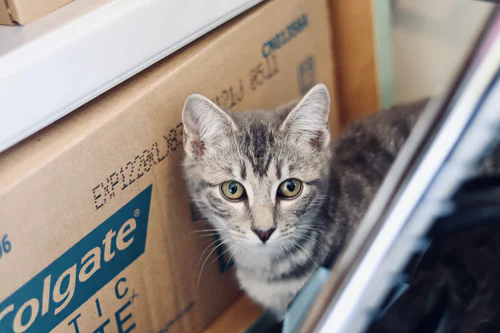Make Moving Stressless for Your Pets
By Rebecca Alston
If you have a furry friend, you're probably aware of how stressed change can make them. Since they all have their routine and their own favorite spots, you're right to worry about what to do with them while you move houses.
All the moving around, the boxes, and the strange people in the house can all make your pet nervous, and they might even try to make a run for it to get away from all the noise.

In cases like this, you'll have to take care of them and keep them as far away from the commotion as possible.
After that, you need to help them adjust to a whole new territory - their new house. That involves easing them into it, making sure they have enough space, and much more. Today, we'll talk about the things you can do to make the big move as stressless for your pets as possible.
Keep Your Pets Away From the Commotion
As we mentioned before, you need to keep your pets away from all the noise. Your house will start losing it's form way before the movers arrive, and you might even want to get a head start on all the moving by dismantling some furniture or taking care of the mirrors. UMoveFree has an interesting remark about this on their website: We encourage you to disassemble your bed frames in advance. You should also remove any mirrors from furniture and/or dressers. The movers can Pet-proof disassemble and reassemble these items, but if you're able to complete this yourself, it will save you time.
With all the noise and commotion, your best bet is to leave them with a friend or a family member in a different house, and if that isn't possible, you can just keep them in another room.
Ease Them Into the New Home
Once you're done with the whole transition, bring your pet to their new home, but do it slowly. The key is to create a sort of home base for them, with their toys, the litter for cats, and all the things that make them feel right at home. Once the whole house is set up, you can slowly start moving everything to where it belongs, and your pet will barely notice.


Prepare Them For the Road Trip
If your new home is a long drive away from your current one, you need to start preparing your pets for the drive a month or two in advance. Cats and dogs can get jumpy in crates if they have to stay there for long, but not when they’re slowly eased into it.
Buy that crate for them a month or two in advance and give them their food in it. Make them associate the crate with happy emotions by marking the end of crate time with a treat or playtime.
You can carry your pet around in the crate, and even take them on short drives. By the time the day of the move comes by, your pet will settle right in and not think much of the whole situation.Pet-Proof Your Home
While your pets are still getting used to the new place, keep things that could harm them away from their reach. Sure, you keep things away from your pets even on regular days, but pets are extra inquisitive and curious about new surroundings, and they'll probably go sniffing everywhere. Pet-proof your house so they don't end up in any unfortunate accidents.
Dogs and cats especially have been known to eat things like silica gel packets, and parts of packaging are best left out of their stomachs.
The key to not stressing your pet out when it comes to virtually any time of change is to be careful and ease them into it. If you introduce it to them all at once, they will most likely panic, resist, and their mental health and overall mood might decline. On the other hand, if you're inching it closer to them bit by bit, it can be business as usual.
